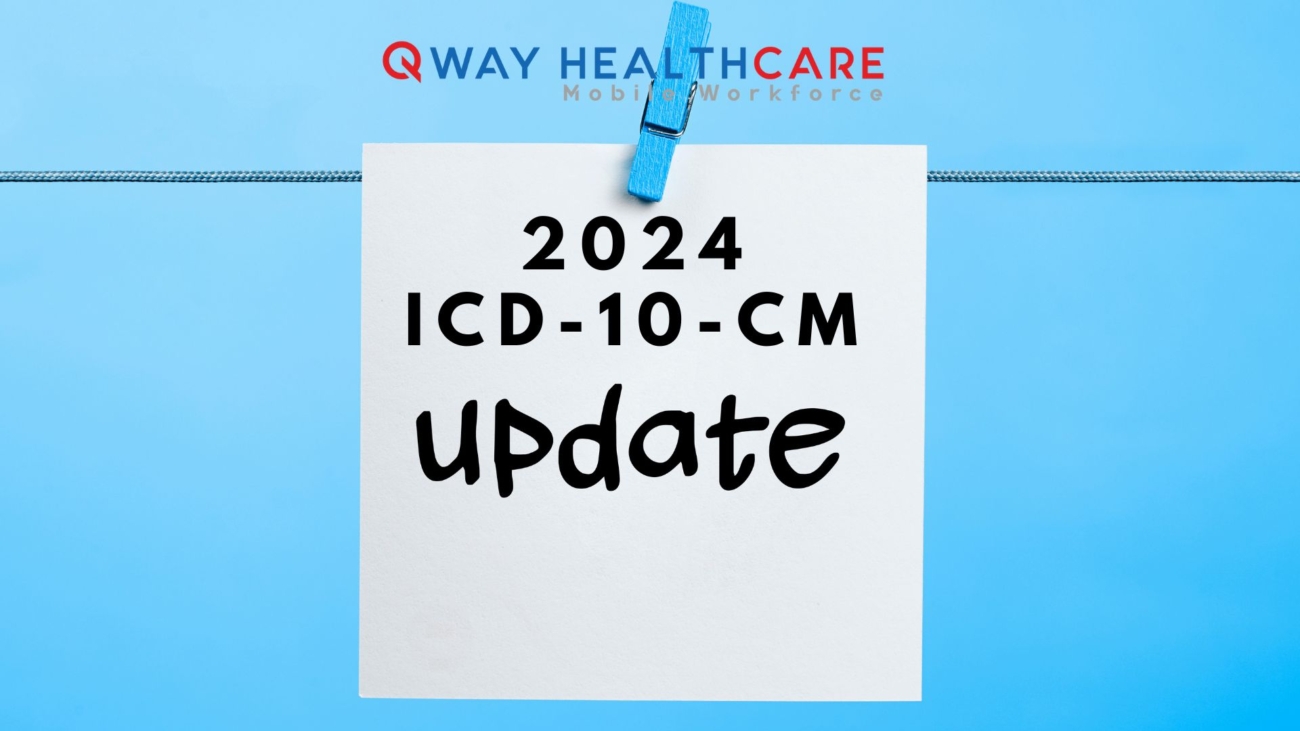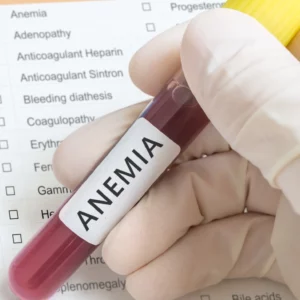The ICD-10-CM code set is getting an update for the fiscal year 2024. This update includes the addition of 395 new codes, the deletion of 25 existing codes, and revisions to 22 codes (with nine of them being changes to the short title only).
Furthermore, there are 131 new headers and four revised headers. While not every section from A to Z is affected, the changes are extensive and will be in effect starting from October 1, 2023.
Certain Infectious and Parasitic Diseases
- For sepsis following a postprocedural wound (surgical site) infection, a code from T81.41 to T81.43, Infection following a procedure, or a code from O86.00 to O86.03, Infection of obstetric surgical wound, that identifies the site of the infection should be sequenced first.
- Screening for COVID-19: For screening for COVID-19, including preoperative testing, assign code Z11.52, Encounter for screening for COVID-19.
Neoplasms:
- Familial adenomatous polyposis (FAP) D13.91
- In the table of Neoplasms, D13.9 is revised to D13.99 for a handful of applicable body areas.
- For FY 2024, the ICD-10-CM code set was expanded per the request of the Desmoid Tumor Research Foundation with eleven new codes, some of them are listed below:
- D48.11 Desmoid tumor
- D48.115 Desmoid tumor of upper extremity and shoulder girdle
- D48.118 Desmoid tumor of other site
- D48.119 Desmoid tumor of unspecified sit
Diseases of the blood and blood-forming:
- Sickle Cell Disorders: New codes for Schwachman-Diamond syndrome (D61.02) and
Immunoglobulin G4-related disease (D89.84), and many parenthetical revisions - D57.04, HB-SS disease with dactylitis
- D57.414, Sickle-cell thalassemia, unspecified with dactylitis
- D57.454, Sickle-cell thalassemia beta plus with dactylitis
- Endocrine, Nutritional, and Metabolic Diseases
Autosomal Dominant hypocalcemia (ADH): A new subcategory houses several new codes to identify individuals with ADH.
- E20.810 Autosomal dominant hypocalcemia (type 1 and type 2)
Code also, if applicable, any associated conditions, such as calculus of kidney (N20.0) chronic kidney disease - (N18.-) respiratory distress (J80, R06.-) seizure disorder (G40.-, R56.9)
- E74.05 Lysosome-associated membrane protein 2 (LAMP2) deficiency
- E88.A Wasting disease (syndrome) due to an underlying condition (Code first underlying condition)
Diseases of Nervous System
(Note: Before 2024, chronic migraine with aura did not have its own code set)
- G43.E Chronic Migraine with aura
- G43.E01 Chronic Migraine with aura, not intractable, with status migrainosus
- G20.A2, Parkinson’s disease without dyskinesia, with fluctuations
- G20.B1, Parkinson’s disease with dyskinesia, without mention of fluctuations
- G20.C, Parkinsonism, unspecified
Diseases of Eye and Adnexa
21 new diagnosis codes have been created to identify extraocular muscle entrapment. The new codes (H50.62 – H50.68) identify which part of the extraocular muscle is affected and laterality. The new codes under category H36 Retinal disorders in disease are classified elsewhere for reporting proliferative and non-proliferative sickle-cell retinopathy of the eye and adnexa.
- H50.641, Lateral rectus muscle entrapment, right eye
- H50.642, Lateral rectus muscle entrapment, left eye
- H50.669, Superior oblique muscle entrapment, unspecified eye
- H36.8 Other retinal disorders in diseases classified elsewhere
- H36.81 Nonproliferative sickle-cell retinopathy
- H54.512 Low vision, right eye, category 2
- H57.8A Foreign body sensation eye (ocular)
Diseases of the circulatory system
- I1A.0, Resistant hypertension
- I20.81 Angina pectoris with coronary microvascular dysfunction
- I21.B Myocardial infarction with coronary microvascular dysfunction
- I47.10 Supraventricular Tachycardia, unspecified
- I47.19 Other Supraventricular Tachycardia
- I24.81 acute coronary microvascular dysfunction
- I24.89 other forms of acute ischemic heart disease
- I25.85 chronic coronary microvascular dysfunction
Diseases of the digestive system
- K90.821, Short bowel syndrome with colon in continuity
- K90.822, Short bowel syndrome without colon in continuity
- K90.829, Short bowel syndrome, unspecified
- K90.83, Intestinal failure
- K35.209 Acute appendicitis with generalized peritonitis, without abscess,
- K35.211 Acute appendicitis with generalized peritonitis, with perforation and abscess
- K68.2 Retroperitoneal fibrosis
- K68.3 Retroperitoneal Hematoma
- K90.82 Short Bowel Syndrome
- K90.829 Short Bowel Syndrome, unspecified
- K90.83 Intestinal Failure
Diseases of the musculoskeletal system and connective tissue
- N04.21, Primary membranous nephropathy with nephrotic syndrome
- N04.22, Secondary membranous nephropathy with nephrotic syndrome
- N06.22, Secondary membranous nephropathy with isolated proteinuria
- N06.20, Isolated proteinuria with diffuse membranous glomerulonephritis, unspecified
- M80.8B2P Other osteoporosis with current pathological fracture, left pelvis, subsequent encounter for fracture with malunion
- M80.889D Other osteoporosis with current pathological fracture, unspecified pelvis, subsequent encounter for fracture with routine healing
- M80.0B1K Age-related osteoporosis with current pathological fracture, right pelvis, subsequent encounter for fracture with nonunion
- M80.0B2G Age-related osteoporosis with current pathological fracture, left pelvis, subsequent encounter for fracture with delayed healing
Pregnancy
- O90.41 Hepatorenal Syndrome following labor and delivery
- O90.49 Other Postpartum acute kidney failure
- O26.64 Intrahepatic cholestasis of pregnancy
Congenital Malformations
- Q87.83 Bardet-Biedl syndrome
- Q87.84 Laurence-Moon syndrome
- Q75.00 Craniosynostosis unspecified
Factors Influencing Health Status
Several social determinants of health (SdoH) codes were added including 8 of the 30 new codes in Chapter 21 – Factors Influencing Health Status and Contact with Health Services (Z00-Z99), which capture details related to child upbringing.
- Z62.23 Child in custody of non-parental relative
- Z62.831 Non-parental relative-child conflict
- Z62.832 Non-relative guardian-child conflict
- Z62.892 Runaway [from current living environment]-Z62.823 Parent-step child conflict
- Z29.81 Encounter for HIV pre-exposure prophylaxis
Key Takeaways:
Of the 395 new ICD-10-CM codes, 123 of them are external cause codes to capture accidents and injuries
CMS also proposes 36 new codes for osteoporosis with current pathological pelvic fracture
Other notable proposed code additions include:
- Several new codes for Sickle cell anemia
- Five new codes for Parkinson’s disease with and without dyskinesia
- Four new codes for migraine with aura
- Three new codes for insulin resistance
- Other notable FY 2024 final ICD-10-CM code updates include:
- 24 new codes added to the disease of the nervous system (G00 – G99) chapter
- 34 new codes added to the disease of eye and adnexa (H00- H59) chapter
- 36 new codes added to the disease of the musculoskeletal system and connective tissue (M00 – M99) chapter
- 22 new codes added and six revised in the congenital malformations, deformations, and chromosomal abnormalities (Q00-Q99) chapter
- 30 new codes added to and six invalidated from the factors influencing health status and contact with health services (Z00 – Z99) chapter
Reach out today to learn more.
Refer for full:
https://www.cmc.gov/medicare/icd-10/2024 ICD-10-CM | CMS
https://www.aapc.com/blog/88401-get-a-jump-on-diagnosis-code-changes-for-fy-2024/




